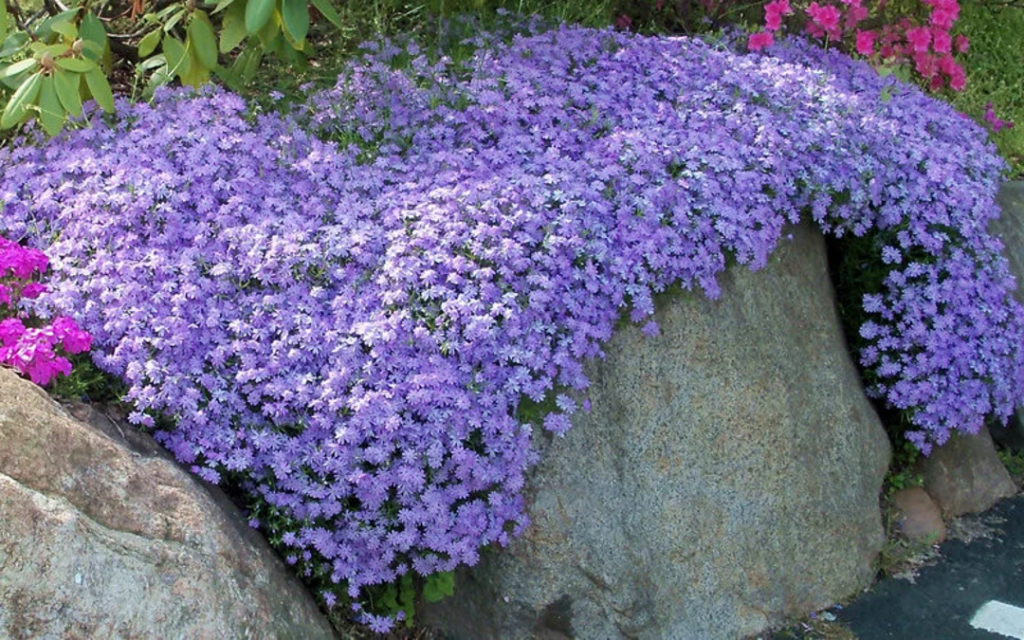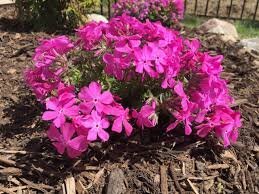Phlox is a beautiful and versatile flowering plant that adds vibrant color to gardens and landscapes. Native to North America, this plant comes in various species and cultivars, ranging from ground-covering varieties to tall, upright perennials. Its clusters of fragrant, star-shaped flowers bloom in shades of pink, purple, red, white, and blue, making it a favorite among gardeners. Whether you’re a seasoned gardener or a beginner, growing phlox can be a rewarding experience. In this guide, we’ll explore everything you need to know about phlox, from its varieties to planting, care, and maintenance.
Types of Phlox
Phlox plants come in a wide range of types, each with its characteristics. Here are some of the most popular varieties:
Creeping Phlox (Phlox subulata)
Creeping phlox is a low-growing ground cover that spreads out to form a dense mat of colorful blooms in early spring. It is perfect for rock gardens, slopes, or as an edging plant for flower beds. The flowers are typically pink, white, or purple, and the plant’s evergreen foliage provides year-round interest.
Garden Phlox (Phlox paniculata)
Garden phlox, also known as tall phlox, is one of the most common species found in perennial gardens. It can grow up to 4 feet tall, with large clusters of fragrant flowers that bloom in mid to late summer. Available in a wide range of colors, including pink, red, white, and lavender, garden phlox is a favorite for attracting butterflies and hummingbirds.
Woodland Phlox (Phlox divaricata)
Woodland phlox is a spring-blooming variety that thrives in shaded areas. It is often found growing in woodland gardens or under trees. This phlox species produces delicate, pastel-colored flowers in shades of blue, lavender, and white. Its low-growing habit and tolerance for shade make it ideal for filling in gaps in shaded borders.
Annual Phlox (Phlox drummondii)
Annual phlox, unlike the perennial varieties, completes its life cycle in one year. This type is perfect for adding bright, cheerful colors to your garden beds or containers. It blooms throughout the summer and comes in a wide variety of hues, including red, pink, white, and even bi-color varieties.
Planting Phlox
Planting phlox is relatively easy, and with proper care, it will reward you with a stunning display of blooms. Here’s a step-by-step guide to planting phlox:
Choosing the Right Location
Phlox plants thrive in well-drained soil and full sunlight, although some varieties like woodland phlox prefer partial shade. Ensure the planting site has good air circulation to prevent fungal diseases like powdery mildew.
Soil Preparation
Phlox prefers slightly acidic to neutral soil (pH 6.0 to 7.0). Amend your soil with compost or organic matter to improve drainage and nutrient content. Well-drained soil is crucial, especially for creeping phlox, as it does not tolerate soggy conditions.
Planting Process
For perennial varieties like garden and creeping phlox, dig a hole that is twice as wide as the root ball and slightly deeper than the plant’s container. Place the plant in the hole, ensuring the top of the root ball is level with the soil surface. Backfill with soil, water thoroughly, and mulch around the plant to retain moisture and suppress weeds.
For annual phlox, you can sow seeds directly into the garden after the danger of frost has passed, or start seeds indoors a few weeks before the last frost.
Spacing
Space taller varieties like garden phlox about 18-24 inches apart to allow for good air circulation and to reduce the risk of fungal infections. Creeping phlox should be spaced about 12-18 inches apart to allow it to spread and form a dense mat.
Caring for Phlox
Phlox is a low-maintenance plant, but a little extra care will ensure healthy growth and an abundance of flowers. Follow these tips to keep your phlox plants thriving:
Watering
Phlox needs consistent moisture, especially during the growing season. Water the plants at the base to avoid wetting the foliage, which can lead to fungal diseases. Water deeply once a week, or more often in hot, dry weather.
Fertilizing
Feed your phlox with a balanced fertilizer in the spring when new growth starts to appear. For best results, use a slow-release fertilizer or apply a liquid fertilizer every four to six weeks throughout the growing season.
Pruning and Deadheading
Regular deadheading (removing spent flowers) will encourage phlox to produce more blooms and extend the flowering period. After the first flush of flowers fades, trim back the stems by one-third to promote fresh growth and additional blooms.
For creeping phlox, you can shear back the plants by one-third after flowering to maintain a tidy appearance and encourage dense growth.
Pest and Disease Control
Phlox is generally resistant to most pests, but it can occasionally be affected by spider mites and aphids. If you notice any pests, treat the plants with insecticidal soap or neem oil.
One of the most common issues with phlox is powdery mildew, a fungal disease that causes white, powdery patches on the leaves. To prevent this, ensure good air circulation around the plants, avoid overhead watering, and apply a fungicide if necessary.
Propagating Phlox
If you want to expand your phlox collection or share plants with friends, there are several methods for propagating phlox:
Division
Perennial phlox varieties can be divided every three to four years to rejuvenate the plants and prevent overcrowding. In early spring or fall, dig up the plant, carefully separate the root clumps, and replant them in well-prepared soil.
Cuttings
You can also propagate phlox by taking stem cuttings in the summer. Choose a healthy stem, cut a 4-6 inch section, remove the lower leaves, and dip the cut end in the rooting hormone. Plant the cutting in a pot filled with a mixture of perlite and peat moss, and keep it moist until roots develop.
Seed Collection
If you’re growing annual phlox or want to collect seeds from your perennial varieties, allow some flowers to mature and go to seed. Once the seed heads have dried, collect the seeds and store them in a cool, dry place until you’re ready to plant them.
Popular Uses for Phlox in the Garden
Phlox is a versatile plant that can be used in a variety of garden settings. Here are some popular ways to incorporate phlox into your landscape:
Borders and Flower Beds
Tall varieties like garden phlox make excellent background plants for borders and flower beds. Their vibrant blooms add height and structure to the garden, and they pair well with other summer-blooming perennials like coneflowers, daylilies, and black-eyed Susans.
Rock Gardens and Slopes
Creeping phlox is ideal for rock gardens, slopes, and retaining walls, where its low-growing habit helps to prevent erosion and soften the edges of hardscaping elements.

Wildlife Gardens
Phlox is a magnet for pollinators, especially butterflies, hummingbirds, and bees. Planting phlox in your garden will help support local wildlife and create a vibrant, lively atmosphere.
Containers and Hanging Baskets
Annual phlox varieties are perfect for containers, window boxes, and hanging baskets. Their compact size and continuous blooms make them an excellent choice for adding color to patios, decks, and balconies.
Conclusion
Phlox is a stunning, easy-to-grow plant that brings a burst of color to any garden. With its diverse range of species, from low-growing ground covers to tall perennials, there’s a phlox variety for every garden style and location. By following the proper planting and care guidelines, you’ll enjoy a thriving phlox garden that attracts pollinators and provides months of beautiful blooms. Whether you’re looking to fill in garden gaps, cover slopes, or create eye-catching floral displays, phlox is a perfect choice.





